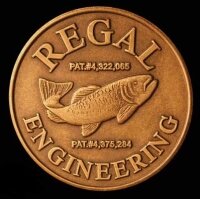This is a nice video on how to tie a Lady Caroline Spey fly.
-
Recent Posts
-

Regal Vise -

Madriver Outfitters -

-

-

-

-

Casters Fly Shop -
Recent Comments
- Paul Beel on Join the Bucket Mouth League revolution!
- Schad Martin on Join the Bucket Mouth League revolution!
- Paul Beel on Holy Grail Caddis
- Steve pesut on Holy Grail Caddis
- Thomas Rohde on Mysis Shrimp – Marc Procopio
-
Categories
- Bonefish
- Bottom Bouncer
- Brian Wise
- Bucket Mouth League
- Carp flies
- Catskill
- Classic
- Deer Hair
- Dennis Collier
- Doug Korn
- emagazine
- fly art
- Fly Fishing
- Fly fishing show
- Fly Rods
- Flymph
- Foam
- FrankenFly
- Giveaway
- Hairwings
- Hoppers
- Interview
- Largemouth
- Michigan
- Mike Schmidt
- Muskie
- New Product
- nymphs
- Panfish
- Pat Barnes
- Pike
- Poppers
- Product Review
- Quick Tip
- Realistic
- RedSpotFly
- Rich Strolis
- Salmon
- Saltwater
- Smallmouth
- Soft Hackles
- Steelhead
- Step by Step
- Streamers
- Tools
- Trout flies
- Uncategorized
- UV
- Vises
-
 FrankenFly Fly Shop
FrankenFly Fly Shop -

-

-

-

-

UNI Products -

-
Archives
- April 2016
- March 2016
- February 2016
- January 2016
- December 2015
- November 2015
- October 2015
- September 2015
- August 2015
- July 2015
- June 2015
- May 2015
- April 2015
- March 2015
- February 2015
- January 2015
- December 2014
- November 2014
- October 2014
- September 2014
- August 2014
- July 2014
- June 2014
- May 2014
- April 2014
- March 2014
- February 2014
- January 2014
- December 2013
- November 2013
- October 2013
- September 2013
- August 2013
- July 2013
- June 2013
- May 2013
- April 2013
- March 2013
- February 2013
- January 2013
- December 2012
- November 2012
- October 2012
-
Feeds
-
-
Meta
- Log in
- Entries RSS
- Comments RSS
- WordPress.org
frankenfly.com

Great video! Astounding quality and I LOVE the music!
What kind of feather are you using for the main hackle? It looks almost like rhea to me, whatever it is, it works very well on the fly.
Few things to consider for anyone wanting to tie this fly as traditionally as possible. The hackle shouldn’t start until about half way down the shank of the fly, but it does look equally good started at the tail as this video demonstrates. One of the oval tinsels is usually counter-wrapped as well, but to be honest I think it looks much nicer if tied as in the video. Also, a throat of some kind of water fowl (I think teal is traditionally used) usually follows the red GP breast feather.
Mind you all of this is simply tradition and as this video demonstrates, by no means necessary. That’s one of the prettiest Lady Carolines I’ve ever seen!
Tony.
Wow, awesome reply Tony, thank you!
-Paul